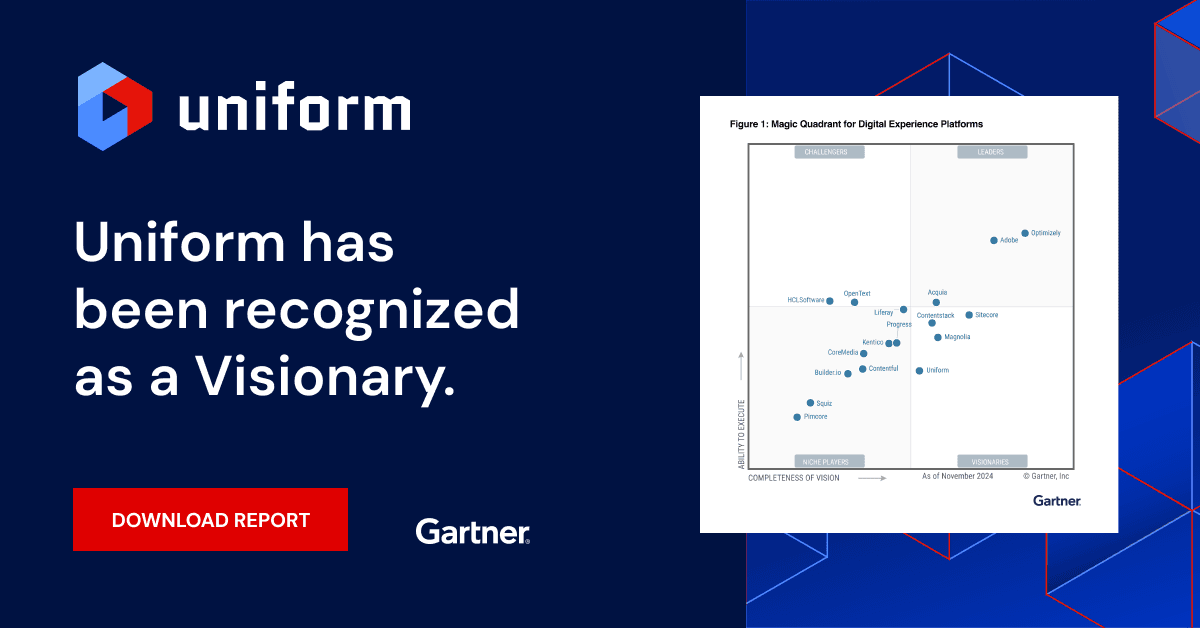Uniform blog/Tips for finding a vendor to fit your composable architecture
Tips for finding a vendor to fit your composable architecture
Tips for finding a vendor to fit your composable architecture
More and more companies worldwide are adopting martech tools powered by a MACH [Microservices based, API-first, Cloud-native, and Headless] architecture, which lends flexibility in building omnichannel digital experiences. In fact, according to a March 2023 global study from the MACH Alliance, a nonprofit organization dedicated to promoting the MACH ecosystem:
- In 2022, 85 percent of the 500-plus organizations surveyed used more MACH-based tools for their infrastructure.
- Four in five respondents pointed out that their investment in MACH is to counter the economic volatility worldwide.
However, notwithstanding MACH-based tools’ amazing benefits, you must evaluate vendors to ensure that they work together well before deciding which ones to procure.
Three tips for evaluating vendors
1. Test the tools.
The beauty of composable architectures and digital experience platforms (DXPs) is that you can plug and play with various headless tools to see how they work. To avoid pigeonholing yourself into building a less-than-flexible framework that acts like a MACH monolith, evaluate vendors to ensure seamless integration by performing hands-on tests to see how the products fit in with your composable experience.
2. Focus on architectural openness and flexibility.
With changes being the constant in technology, a sustainable, adaptable framework is a major advantage. Part of why composability is important—and why many organizations are adopting MACH and composability to offset economic variability—is that composable is future-proof, capable of adapting to new headless technologies and becoming ready for the next-generation experiences on web, mobile, and IoT devices.
So, look for tools that focus on architectural openness and flexibility. You can then safely build a composable framework that can keep up with rapid changes in functionality, channels, or programming frameworks.
3. Prioritize ease of use and development.
Most vendors emphasize that they check all the boxes. Since software can do anything, that statement is true…ish. However, you should look for a vendor whose software demonstrates actual ease of use and development so that your teams can pick it up fast for their tasks.
That idea echoes the try-before-you-buy sentiment. Also, since a major element of composability is that you can work with multiple vendors, you can find the ones that best fit your needs.
How Uniform can help
Based on these principles of evaluating composable vendors, Uniform has been architected specifically to meet those needs; it can help connect new and existing data sources and blend them seamlessly into structures can be used by your development team—while simultaneously making it so those underlying sources can be cached and swapped, adding performance and flexibility.
Implementing Uniform at the start of a composable transformation can help accelerate those efforts by making it faster and easier to build and experiment in a way that minimizes the risk from “big bang” migrations.
Resources from Uniform
For a more thorough look at how to evaluate vendors and find the right partners with an RFP process, check out our Composable CMS Evaluation Guide.
For details on how to go composable without compromise, request a free demo of Uniform DXP.





.png&w=1080&q=90)
.png&w=1080&q=90)
.png&w=1080&q=90)